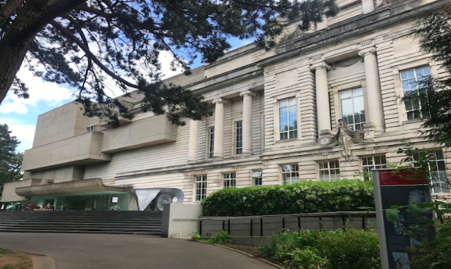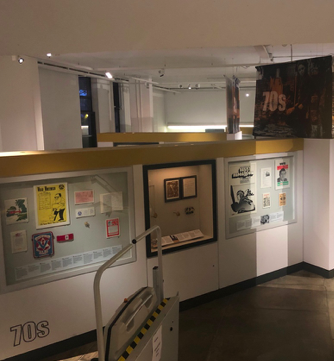Nestled in the Botanic Gardens of South Belfast, not far from Queen’s University, lies the Ulster Museum. The largest museum in Northern Ireland, its facade has undergone numerous changes over the century. Today, it is an amalgamation of the classical architecture of the original building and the Brutalist style of the newer portion built in the late 1960’s and early 1970’s.
I like to think that its architectural style represents a certain duality. It doesn’t fully choose either the past or the future, but appears content to straddle both. Depending on the viewer, or even the day, the building can be regal, inspiring and uplifting or foreboding, overbearing, even uncommunicative. Neither interpretation is wrong.

During my first month in Belfast, my interactions with the museum were fleeting. I’d walk by it while on strolls in the Botanic Gardens, or I’d give it a fleeting glance while running late to play tennis. After weeks of eyeing it, I finally found the time to go.
When I strolled into the museum’s main hall for the first time, I was struck by the large dinosaur imitations looming above the throngs of visitors. While most faces stared above, I turned left, dodging the schoolchildren and tourists, to investigate the museum’s exhibition “The Troubles and Beyond.” Opened in 2018, the exhibit tells the story of the Troubles through a variety of objects, artifacts, and oral histories. The Ulster Museum, which is operated by National Museums Northern Ireland, has the onerous task of catering to individuals who experienced the Troubles firsthand, while also remaining accessible to foreign tourists with little understanding of the conflict. Its Troubles gallery captures the difficulty of conveying a traumatic, violent, and recent history.

A central challenge to constructing an exhibit on the Troubles is that its history is still deeply contested. Questions about responsibility, the motives of the conflict’s principle actors, and the pursuit of justice by the state are hotly debated. Unlike other societies wrought by conflict, such as South Africa or Guatemala, Northern Ireland has not had a Truth and Reconciliation Commission. As a result, there is no shared historical narrative. Republicans, unionists, and the British state have all attempted to define the conflict as it related to their own interpretation.
But the Ulster Museum handles this challenge well. Embedded throughout the exhibit are narratives and stories from those who lived in the conflict. The museum doesn’t attempt to say that one side is “correct,” but it recognizes the existence of different narratives and provides a space for them to come together. It allows visitors to listen to listen to oral histories, not just from republicans and unionists, but from a variety of people who endured the conflict. The ubiquity of personal stories in the gallery can be a lesson for other memorial sites – stories allow us to empathize with others, understand a multitude of perspectives, and help us imagine the society we want to build.
